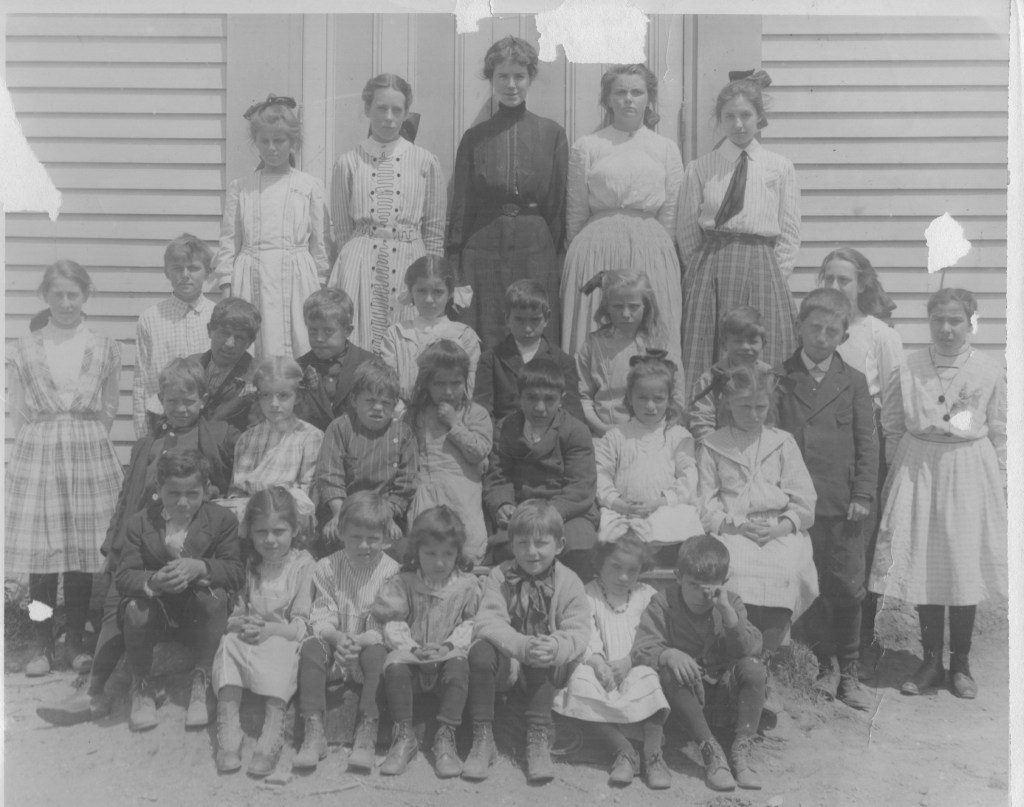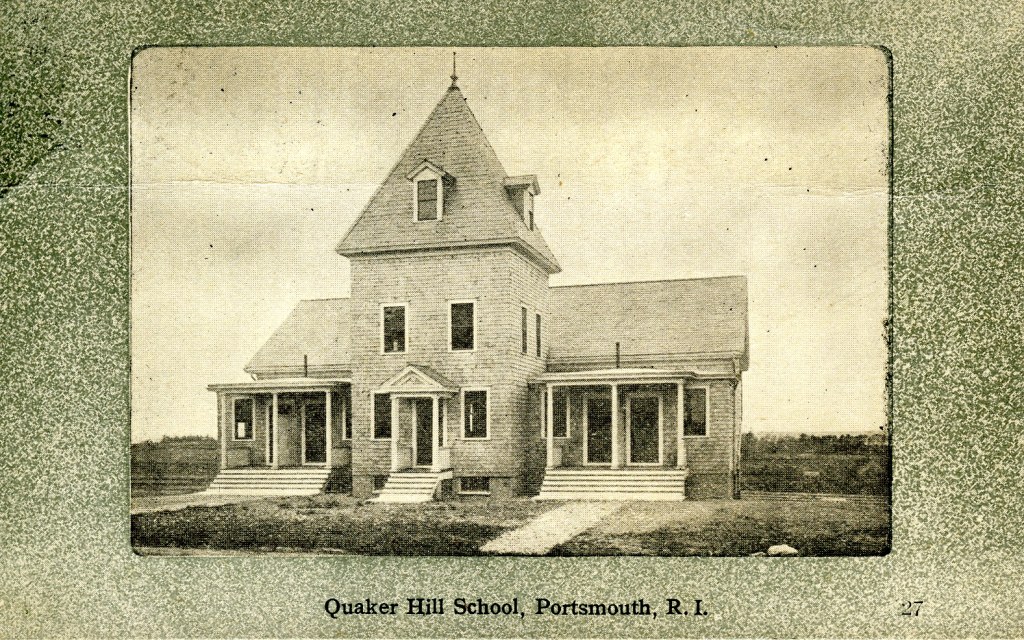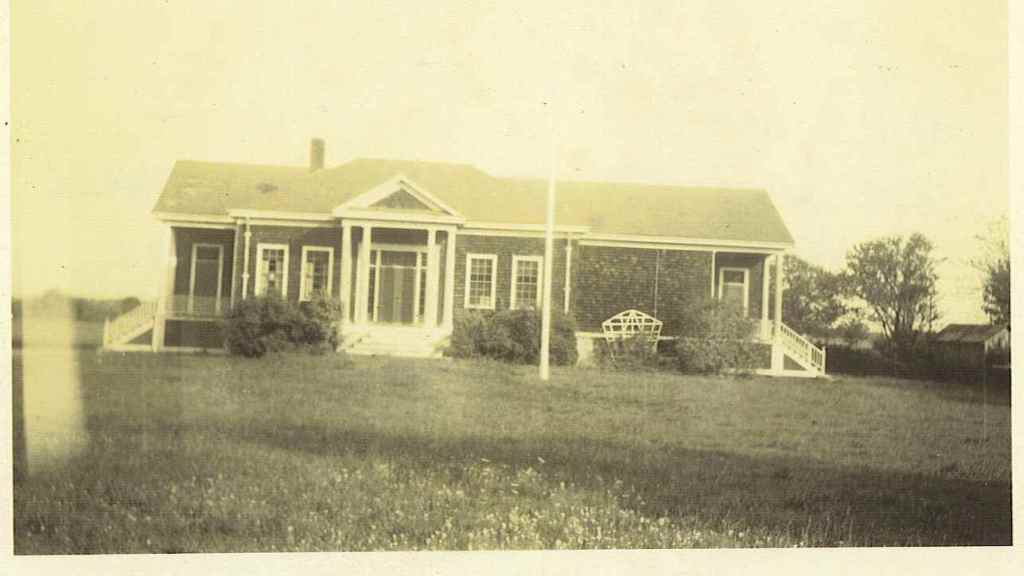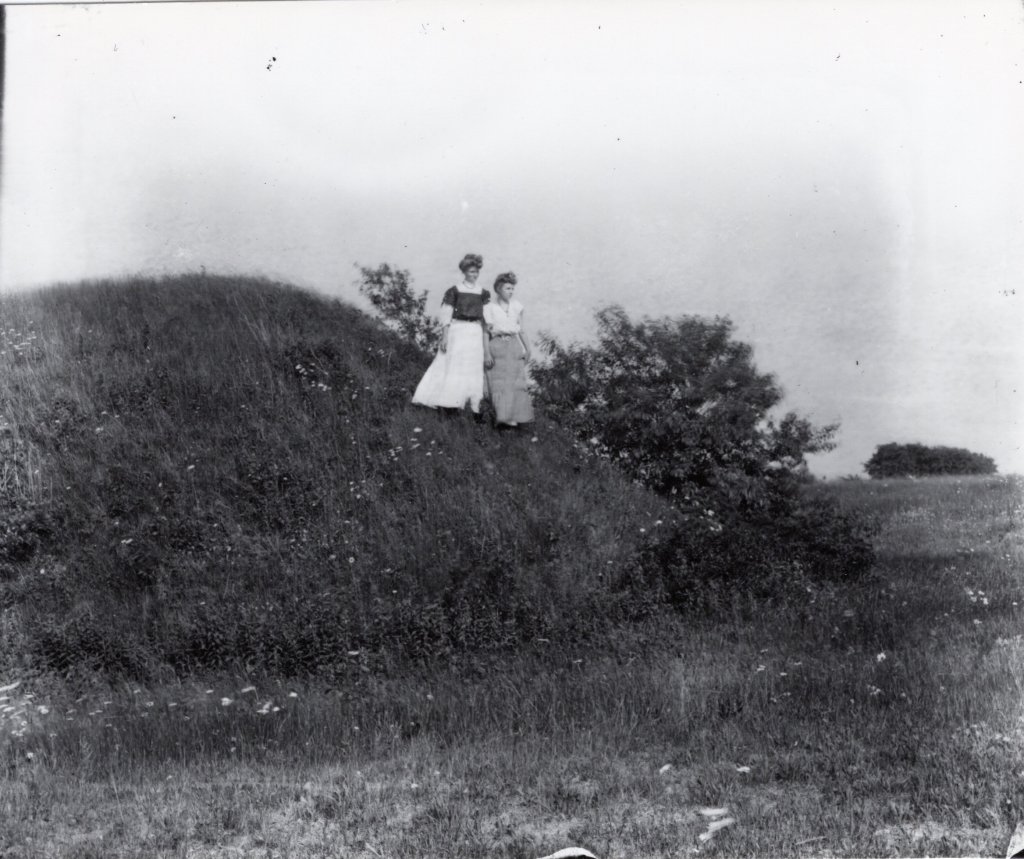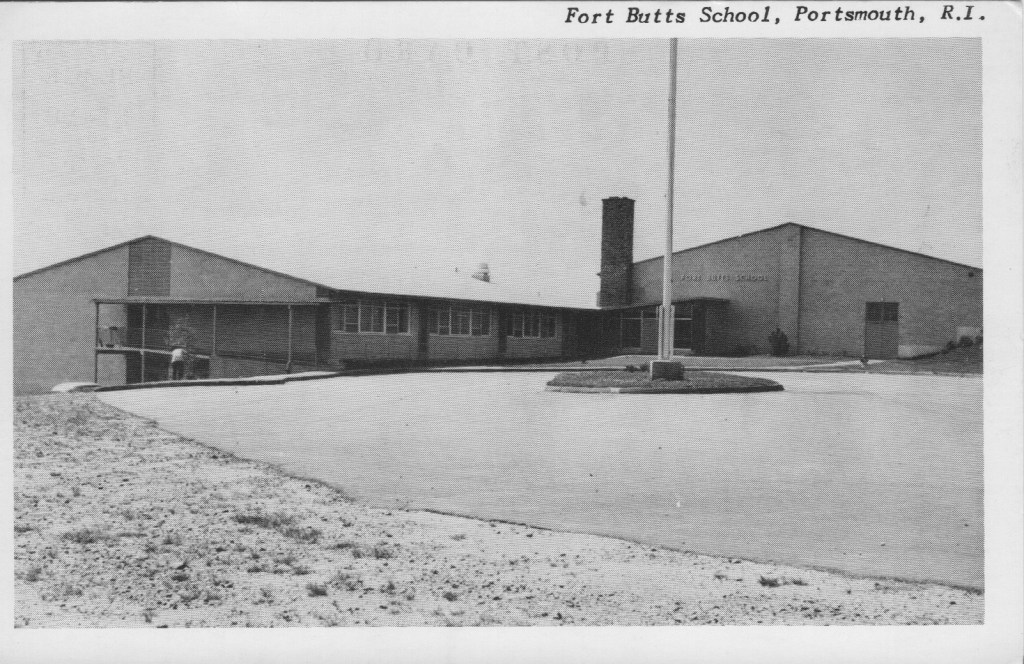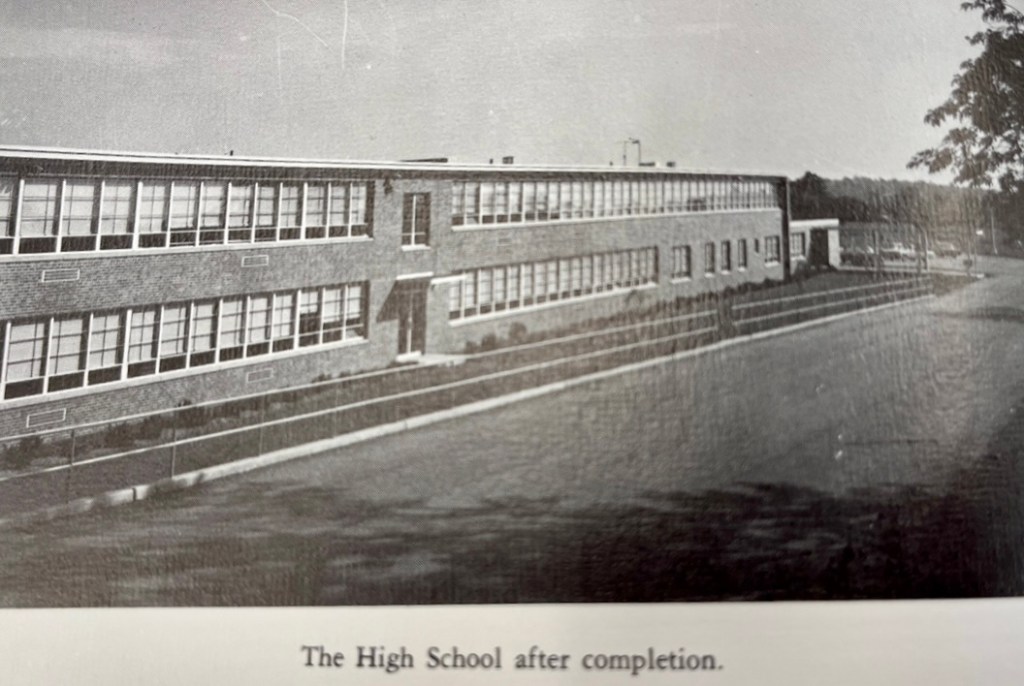What was it like to go to a one or two room school? In 2005 Elmhurst 3rd graders interviewed Portsmouth residents who had that experience. Here is a sample of some of the questions and answers from those interviews.
Interview of Mr. Douglas Wilkey
Quaker Hill School and other schools in the district
What did you wear? They wore knickers that went right under the knee and socks that pulled up and folded at the end.
How many students were in your class? There were from 32 to 36 students in the class.
How many classrooms were in your school? There were three classrooms at Newtown School. There were two rooms at Quaker Hill School. Anthony School had ten rooms. Anne Hutchinson and Coggeshall had four classrooms.
How were kids punished? We were whacked with rulers.
Mrs. Joy Schuur went to Coggeshall School
What were your teachers like? The teachers were single and when they got married they weren’t teachers.
What subjects did you have? We had more music than you do. They didn’t have library or gym. They had math, spelling and language.
What kind of holidays did you have? We had no spring break. There was a long Christmas and Easter break.
Miss Fay and Mrs. Powers went to Bristol Ferry School
What games did play at recess? We played hopscotch, jump rope and jacks. They had a morning recess which was fifteen minutes and afternoon recess after lunch which was an hour long.
How many grades were in your school? They had grade one to grade eight.
What did you wear to school? Girls wore dresses and cotton stockings. Boys wore pants or knickers.
What was the discipline like? If you got in trouble you would get sent out of the room, sent to the principal’s office or had to sit in the corner. The first thing they would do was have you sit in front.
What were the bathroom’s like? There was one outhouse.
Mrs. Wilkey went to Newtown School
Some information the students learned.
Newtown School had three classrooms.
The oldest students might have been 16 years old.
They had spelling bees and Mrs. Wilkey did well.
They had an art teacher and a music teacher, but no library or physical education class.
Ten or twelve students might not pass on to the next grade.
Girls were not allowed to play team sports.
If students were bad, the principal would call the parents and they were in trouble at home.
